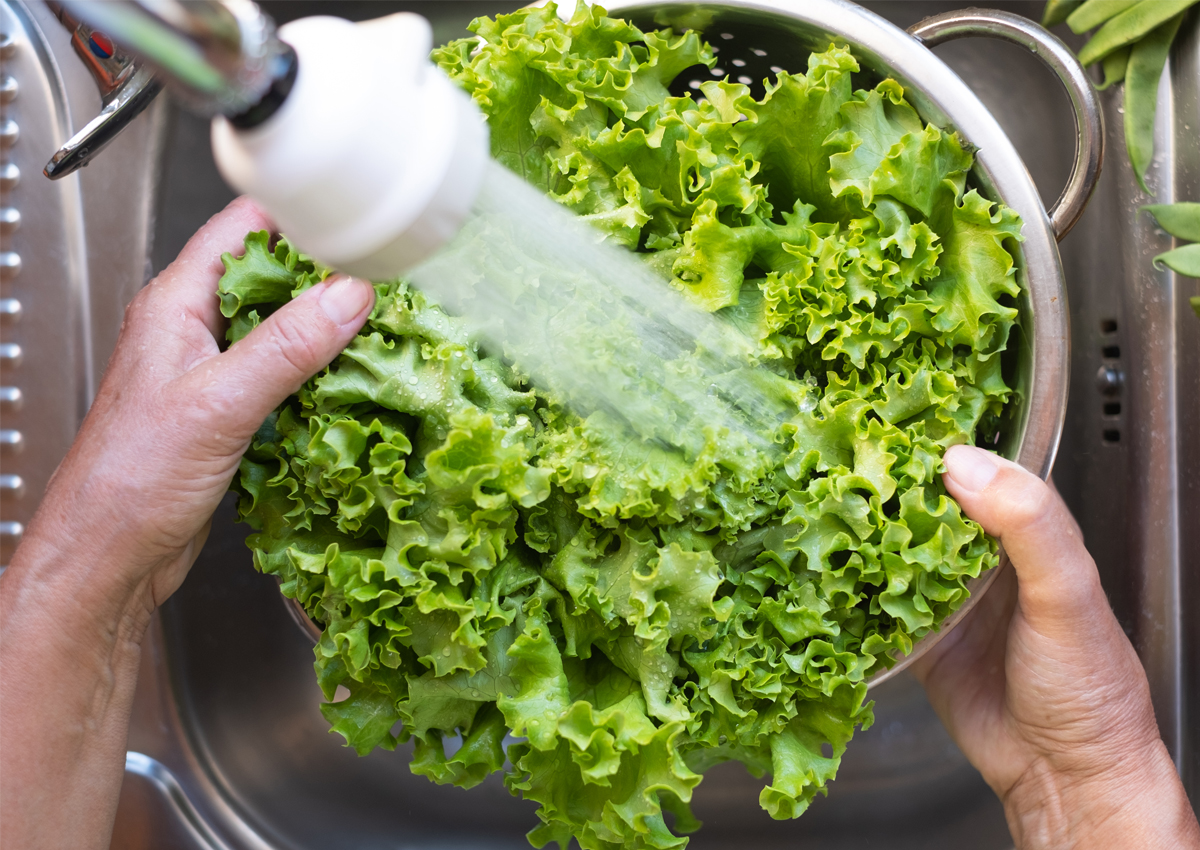
ARS Scientists Identify Genes Associated with Postharvest Deterioration of Fresh-Cut Lettuce
May 20, 2020| |
Scientists from the U.S. Department of Agriculture Agricultural Research Service (USDA ARS) have identified five Romaine lettuce varieties that brown less quickly after fresh-cut processing and are slower to deteriorate postharvest. They have also identified the location of genes associated with postharvest deterioration of fresh-cut lettuce, and are in the process of identifying genes associated with browning.
According to the scientists, when browning and deterioration ratings are considered, the best breeding lines for commercial production and also to use as parents to develop new varieties are Darkland, Green Towers, Hearts Delight, Parris Island Cos, and SM13-R2. The chromosome region that contains the genes for slow deterioration also contains four genes (Dm4, Dm7, Dm11, and Dm44) and one DNA region (qDm4.2) that code for resistance to downy mildew, one of the most-costly lettuce disease. This colocation indicates a strong linkage between one or more of the four genes and the rate of deterioration. From their findings, DNA-based markers can be used to develop new breeding lines with a slow rate of deterioration and desirable combinations of resistance genes.
The results of this study could help the efforts of lettuce producers and processors to control browning and prolong shelf life which currently includes costly practices such as modified atmosphere packaging and flushing bags of cut lettuce with nitrogen gas to reduce oxygen levels in the bags.
For more details, read the ARS Research News.
| |
You might also like:
- UPenn Develops Lettuce That Stimulates Bone Building Cells
- Non-Browning GreenVenus™ Romaine Lettuce Advances to Commercial Trials in the US
- Lettuce Genome Assembly Published
Biotech Updates is a weekly newsletter of ISAAA, a not-for-profit organization. It is distributed for free to over 22,000 subscribers worldwide to inform them about the key developments in biosciences, especially in biotechnology. Your support will help us in our mission to feed the world with knowledge. You can help by donating as little as $10.
-
See more articles:
-
News from Around the World
- ISAAA Monitors Progress of Research on COVID-19
- Kenyan Researchers Seek Approval to Introduce Disease-Resistant Cassava
- ARS Scientists Identify Genes Associated with Postharvest Deterioration of Fresh-Cut Lettuce
- USDA Finalizes SECURE, Eases Up Biotech Regulations
- Scientists Solve 20-Year Old Wheat Genetics Puzzle
- South Australia Moves Closer to Planting GM Crops
- EFSA Releases Scientific Opinion on Oilseed Rape MS11
-
Research Highlights
- Plant Viruses Found to Potentially Treat Diabetes, Arthritis
-
Plant
- CRISPR-Cas12b/C2c1 Tested in Targeted Mutagenesis of a Dicot
-
Health
- Medicago Announces Positive Results of Trials for its COVID-19 Vaccine Candidate
-
Read the latest: - Biotech Updates (December 10, 2025)
- Gene Editing Supplement (November 26, 2025)
- Gene Drive Supplement (February 22, 2023)
-
Subscribe to BU: - Share
- Tweet

